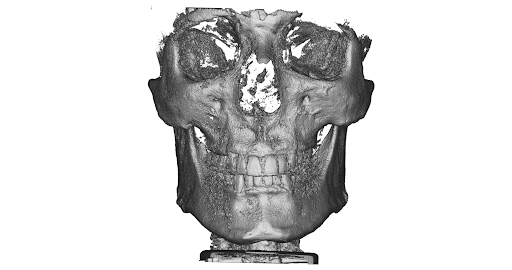This is Chapter 6.2 of the JawHacks ebook. See the full Table of Contents here.
MARPE is Dumb
If an iPhone is “smart,” then MARPE is dumb. And by dumb, I mean it’s a brute. All it does is go left/right with respect to itself.
This means that if MARPE is placed in the palate at, say, a 45 degree angle, then it would push one side of the palate forward and the other side backward, as described by Dr. Manuele in our recent interview on JawHacks.

MARPE does not adjust itself based on feedback received from its environment. It cannot monitor itself in any way. The MARPE does not know if it has been placed in the palate at an angle, or if the palate is already crooked, etc.
It just blasts out left/right relative to its central jackscrew.

Because of their tremendous power, these “dumb,” non-self regulating MARPE appliances can be very dangerous if not guided carefully by a smart human overseer.
Mitigation
Regular (weekly) orthodontic checkups are essential to providing human oversight to MARPE. This can be done in person or through an app like Grin, which conscientious providers like Dr. Jeremy Manuele use.
It can also be done by text, such as with Dr. Kasey Li who gives patients his cell phone number. At a minimum, weekly checkups are recommended during expansion.
To be clear, monitoring the appliance does not allow you to fix and reorient it if an asymmetry forms. If you are monitoring it and "catch it early," at, say 2-4mm of expansion, that's still a 2-4mm asymmetry.
But if it’s caught early enough, perhaps within 2-3 weeks, you have the ability to turn it back, although it’s not clear that turning it back is 100% effective. It may not be. There is evidence in some cases that reversing the appliance is only partially effective.
So, monitoring does not prevent asymmetry. It just allows you to stop the expansion early before it gets severe (7-10mm), or abort the expansion completely and turn back, hopefully to somewhere near the original starting point.
As we will see, the better approach is to get the MARPE expansion vector correctly determined, in order to prevent asymmetry from happening in the first place.
Choosing the Wrong Expansion Vector
Asymmetry can be caused by placing the appliance so that the jackscrew is not oriented parallel to the correct expansion vector.
This happens primarily when the provider fails to determine the correct expansion vector.
Choosing the correct expansion vector is not easy. It requires being able to analyze a patient’s CBCT and use certain cephalometric parameters, such as the Frankfort Horizontal Plane, to align the skull itself.
This type of cephalometric work is the area of maxillofacial surgeons who must manipulate and align radiographic images as part of their careful surgical planning.
But it is generally outside the wheelhouse of orthodontists.
And orthodontists’ inability to perform this cephalometric work has led them to take shortcuts in determining the proper orientation of MARPE devices.
For example, they might simply place the MARPE flush with the patient’s palate. But if the palate is tilted, then the appliance will be tilted, and expand in a tilted manner as we saw above.
Or, a more sophisticated approach would be that of Dr. Lipkin, who has encouraged providers to place the appliance parallel to the bite plane rather than the palate in order to prevent asymmetry.
But it’s not clear that Lipkin’s approach is the answer either, as you could imagine a skeletal asymmetry (in the cheekbones, for example) worsening if only the teeth are considered during expansion.
When it comes to the importance of properly aligning and analyzing CBCTs as part of the MARPE planning process, think about the below image.
In this image, the patient’s head was tilted slightly in the scanner. But the lab, due to error, might not notice the tilt, and might orient the appliance level with respect to the tilted head.

If the appliance were manufactured according to this error in alignment, then the image shown below would be the actual orientation of the MARPE with respect to a level plane.

Since MARPE expanders only push left/right with respect to themselves, this would result in an actual up/down sort of expansion, in which the right side of the palate (left in the image above) drops down, and the left side (right in the image) comes up.
Obviously, this would lead to an asymmetry, and perhaps even a unilateral frontomaxillary suture fracture on the side pointing down (more on this later).








